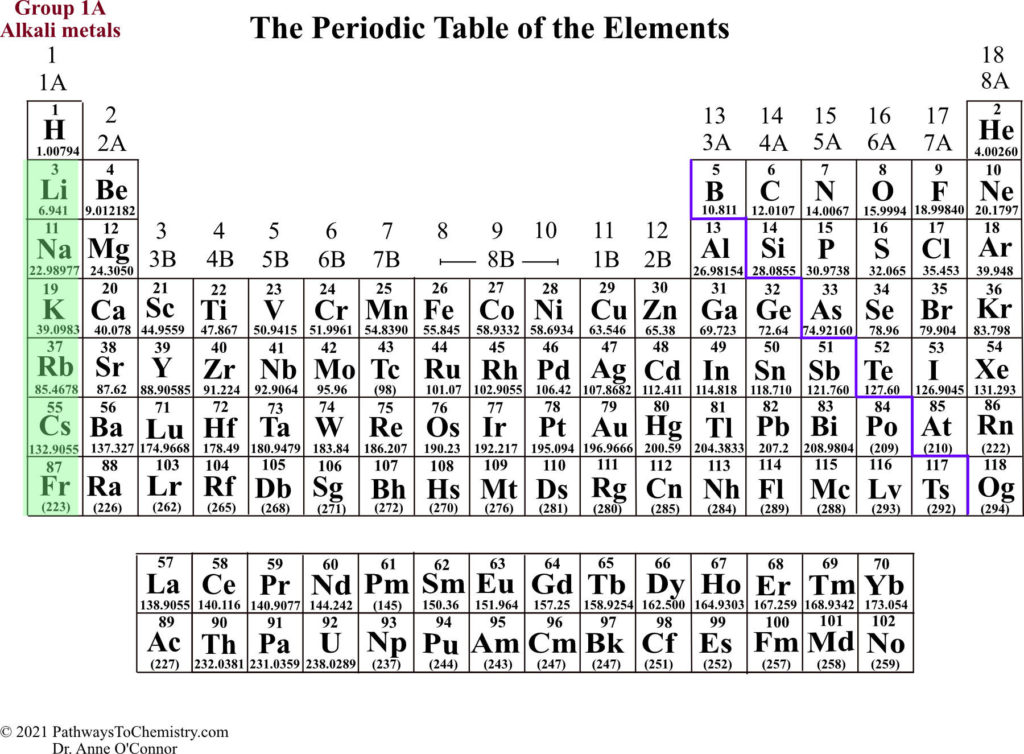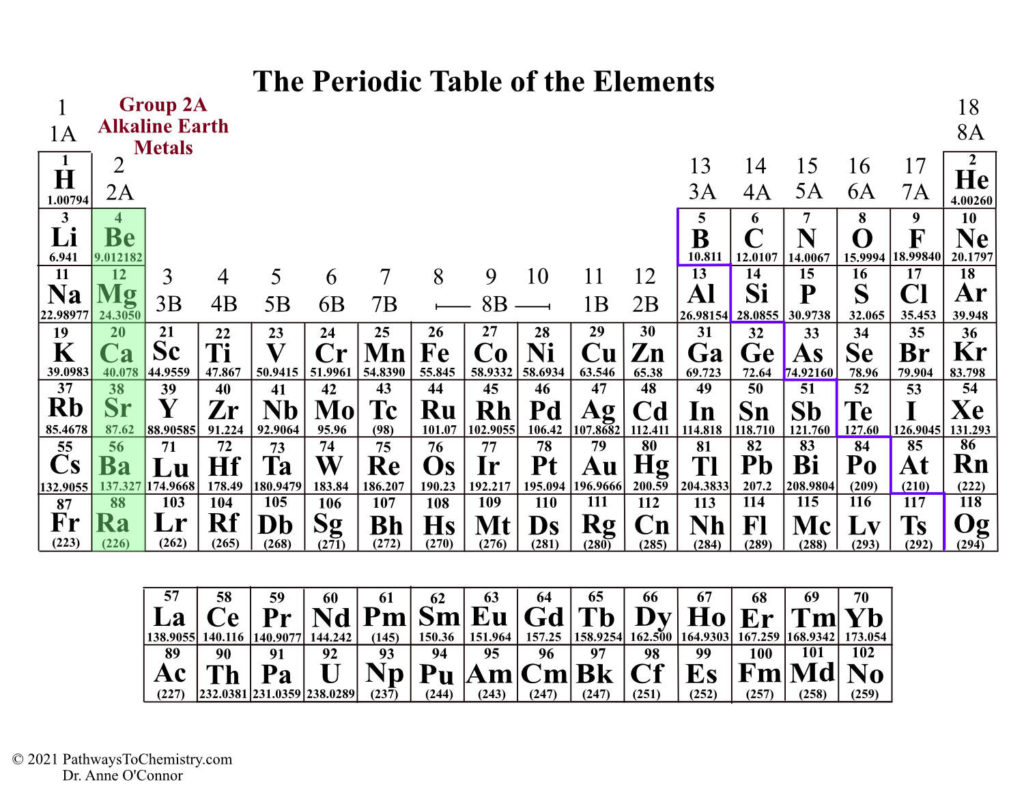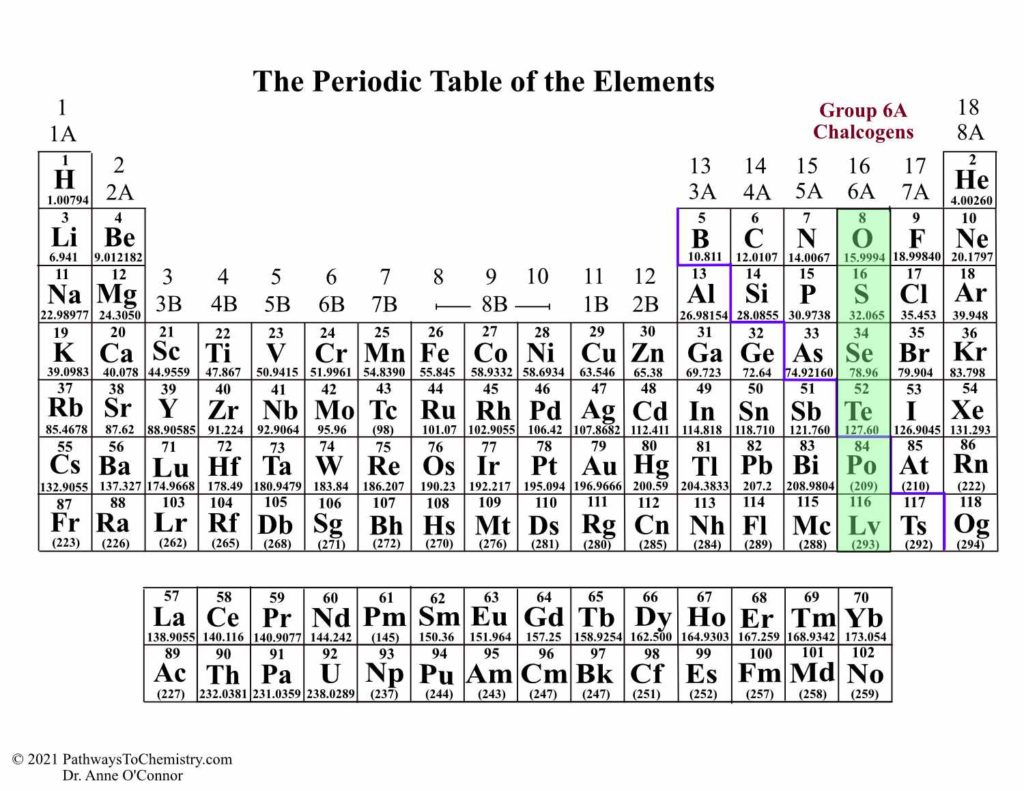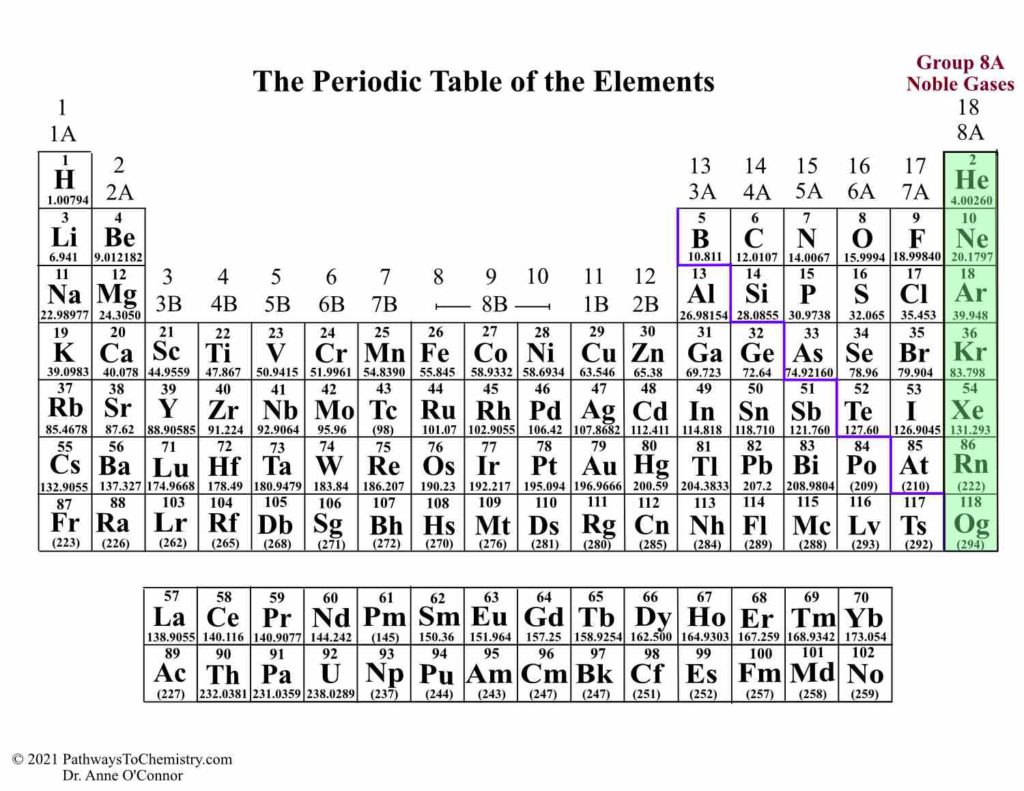Recall, the elements in a group are similar in chemical behavior. The elements in Group 1A are called the alkali metals. They include lithium (Li), sodium (Na), potassium (K), rubidium (Rb), and Cesium (Cs). Hydrogen is a non metal and therefore is not an alkali metal. (click on the periodic table to see full size view)
The alkali metals are soft, lustrous, and silvery. For example, sodium metal can be easily cut with a knife. These metals react violently with water to produce an alkaline solution. The alkali metals are highly reactive and are never found in nature in their pure form.
The elements in Group 2A are called the alkaline earth metals. They include beryllium (Be), magnesium (Mg), calcium (Ca), strontium (Sr), barium (Ba), and radium (Ra).
Like the alkali metals, these metals are not found in their pure form. They are combined with other elements as compounds. They are lustrous silver metals and even though they are reactive, they are less reactive than the alkali metals.
Group 6A are the chalcogens and include oxygen, sulfur, selenium, tellurium, and radioactive polonium. The name chalcogen is Greek in origin, and is derived from the word chalcos, meaning ore formers. All of the chalcogens are found in copper ores and their compounds are called chalcogenides. Both sulfur and oxygen are found in pure form, however, all of the elements are metal ions in their ores.
In Group 7A we have the halogens. These include fluorine (F), chlorine (Cl), bromine (Br), and iodine (I). Fluorine and chlorine are gases while bromine is a liquid. Iodine is a solid. These nonmetals are colorful and corrosive. Astatine is classified as a halogen, but it is rare, therefore, not much is known about it.
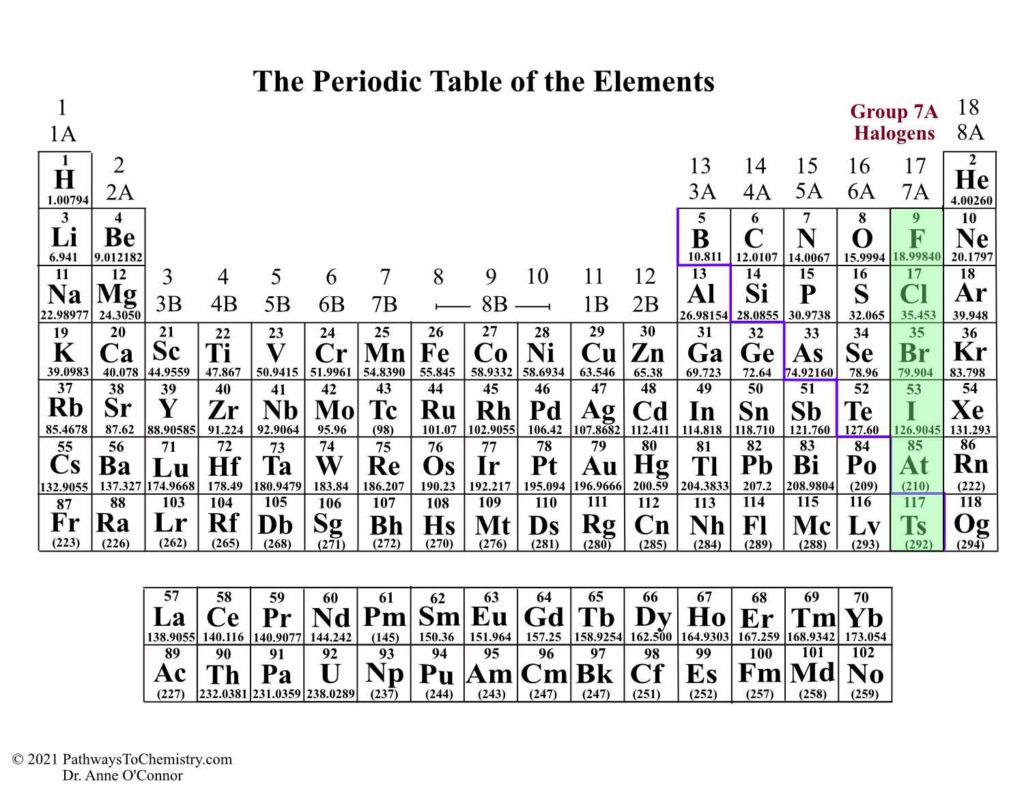
In Group 8A are the noble gases. They are inert, meaning they have very low chemical reactivity. The noble gases are colorless gases and include helium (He), neon (Ne), argon (Ar), krypton (Kr), xenon (Xe), and radon (Rn).
Worksheet: Periodic Table Part 1
Worksheet: Periodic Table Part 2
Back to Atoms, Molecules, and Ions
Back to Study Guide List for General Chemistry 1

